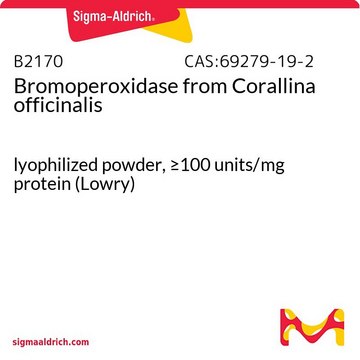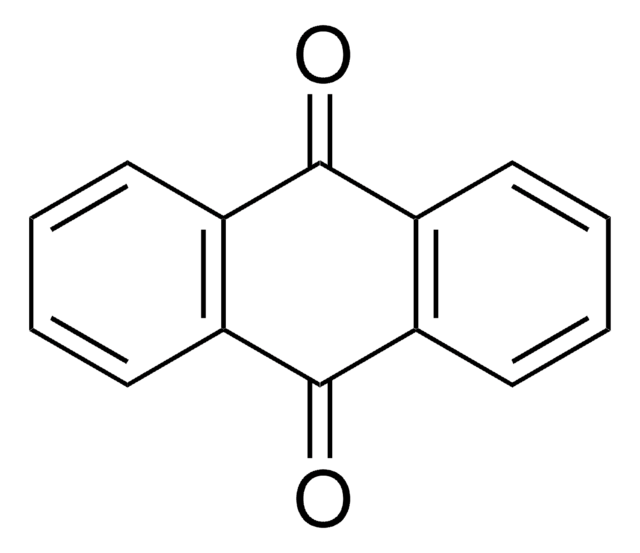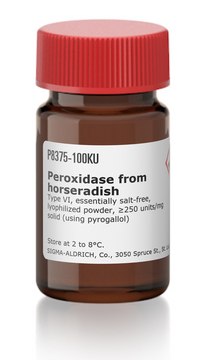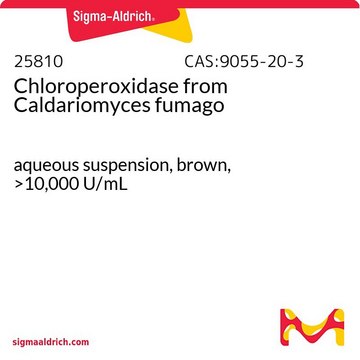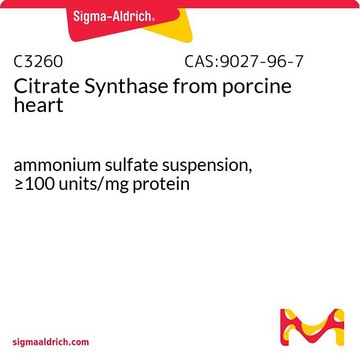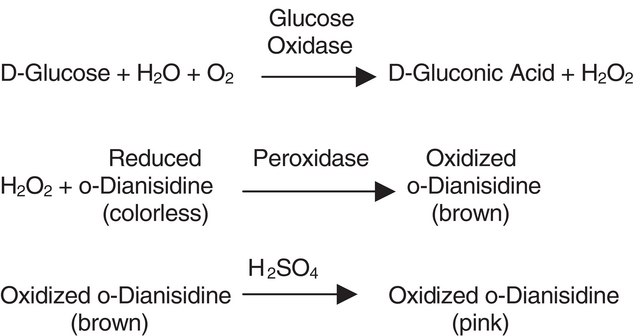C0278
Chloroperoxidase from Caldariomyces fumago
buffered aqueous suspension, ≥3,000 units/mL
Synonym(s):
Chloride Peroxidase, Chloride:hydrogen-peroxide oxidoreductase
Sign Into View Organizational & Contract Pricing
All Photos(1)
About This Item
CAS Number:
MDL number:
UNSPSC Code:
12352204
NACRES:
NA.54
Recommended Products
form
buffered aqueous suspension
Quality Level
mol wt
42 kDa
concentration
≥3,000 units/mL
shipped in
wet ice
storage temp.
2-8°C
Looking for similar products? Visit Product Comparison Guide
Related Categories
General description
Chloroperoxidase is a heme containing glycoprotein that is secreted from fungus. Chloroperoxidase (CPO) is a extracellular heme glycoenzyme containing ferriprotoporphyrin IX as the prosthetic group.
Application
A useful alternative to lactoperoxidase for 131I ion labeling studies, for bromination of proteins, and for 36Cl labeling of macromolecules in long-term isolation procedures.
Chloroperoxidase from Caldariomyces fumagois is useful alternative to lactoperoxidase for 131I ion labeling studies, for bromination of proteins, and for 36Cl labeling of macromolecules in long-term isolation procedures. It has been used to study biocatalytic oxidation in polymersome nanoreactors .
It has been used to study biocatalytic oxidation in polymersome nanoreactors.
Biochem/physiol Actions
Chloroperoxidase (CPO) is secreted from fungus and exhibits a broad spectrum of chemical reactivities. It is a peroxide-dependent chlorinating enzyme and it also catalyzes peroxidase, catalase and cytochrome P450-type reactions of dehydrogenation, hydrogenperoxide (H2O2) decomposition and oxygen insertion, respectively. The enzyme has magnetic and spectroscopic properties similar to that of cyctochrome P-450. CPO from the fungus Caldariomyces fumago has the capacity to chlorinate aromatic hydrocarbons, including polycyclic aromatic hydrocarbons (PAHs). PAHs are considered to be a potential health risk because of their possible carcinogenic and mutagenic activities and are widely dispersed in the environment.
Unit Definition
One unit will catalyze the conversion of 1.0 μmole of monochlorodimedon to dichlorodimedon per min at pH 2.75 at 25 °C in the presence of potassium chloride and H2O2.
Physical form
Crude suspension in 0.1 M sodium phosphate, pH ~4.5
inhibitor
Product No.
Description
Pricing
Signal Word
Danger
Hazard Statements
Precautionary Statements
Hazard Classifications
Resp. Sens. 1
Storage Class Code
10 - Combustible liquids
WGK
WGK 3
Flash Point(F)
Not applicable
Flash Point(C)
Not applicable
Personal Protective Equipment
dust mask type N95 (US), Eyeshields, Gloves
Choose from one of the most recent versions:
Already Own This Product?
Find documentation for the products that you have recently purchased in the Document Library.
Our team of scientists has experience in all areas of research including Life Science, Material Science, Chemical Synthesis, Chromatography, Analytical and many others.
Contact Technical Service